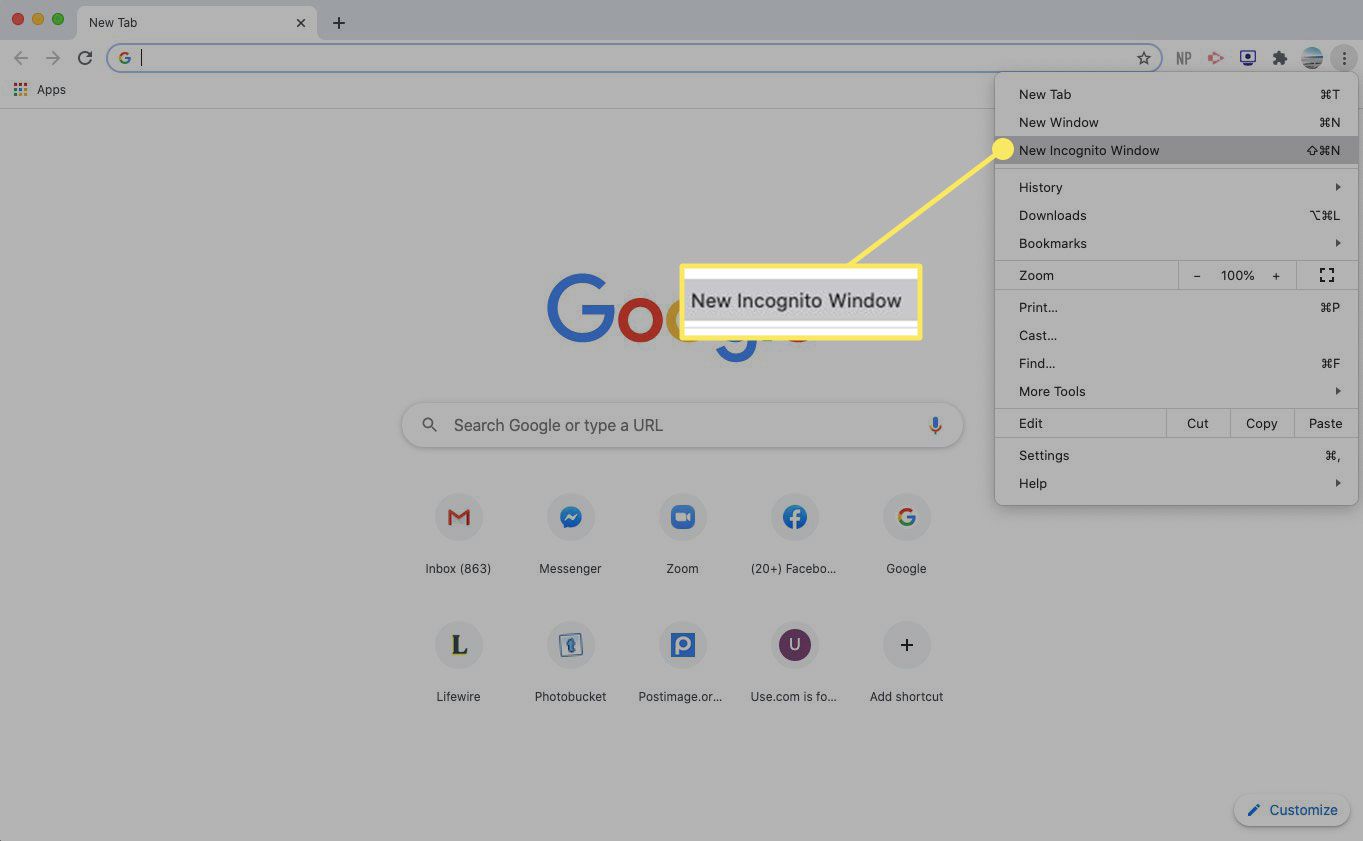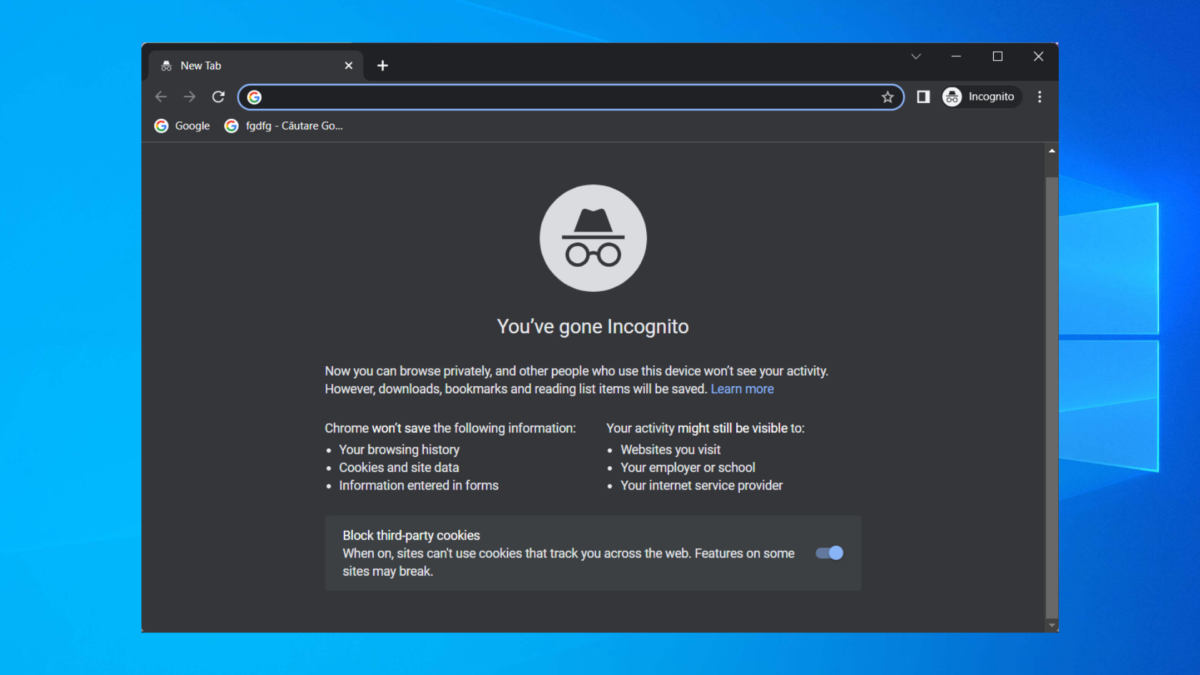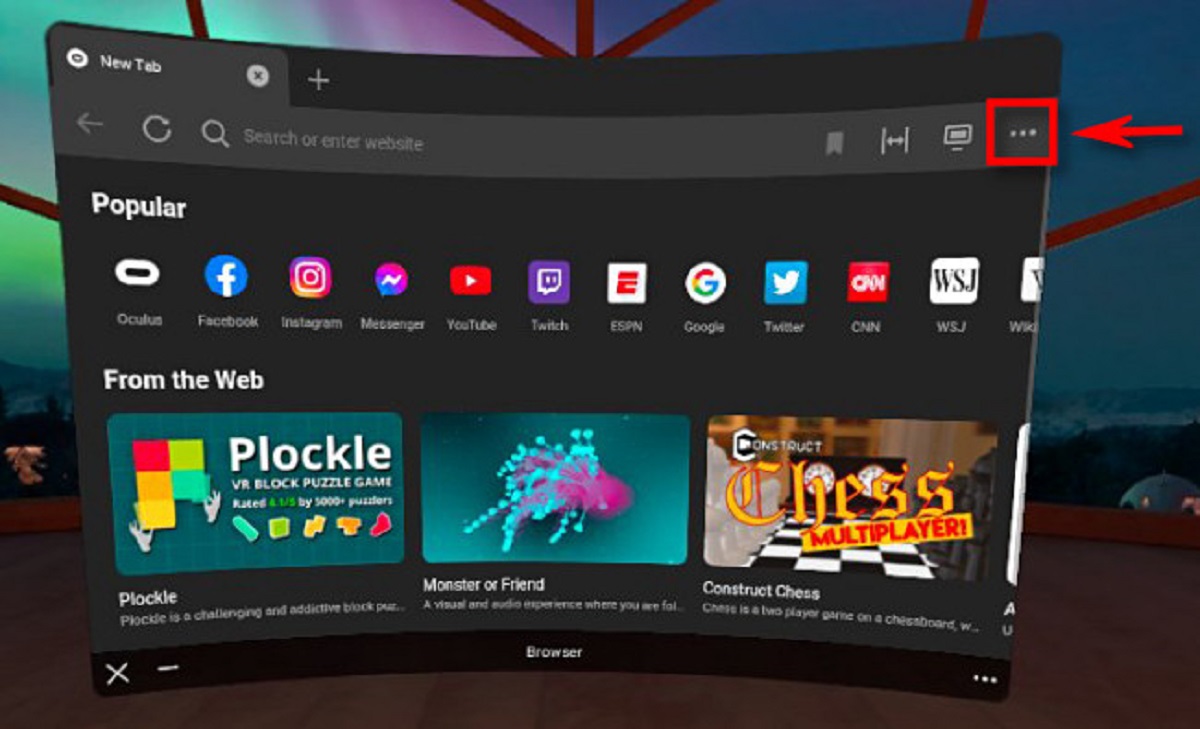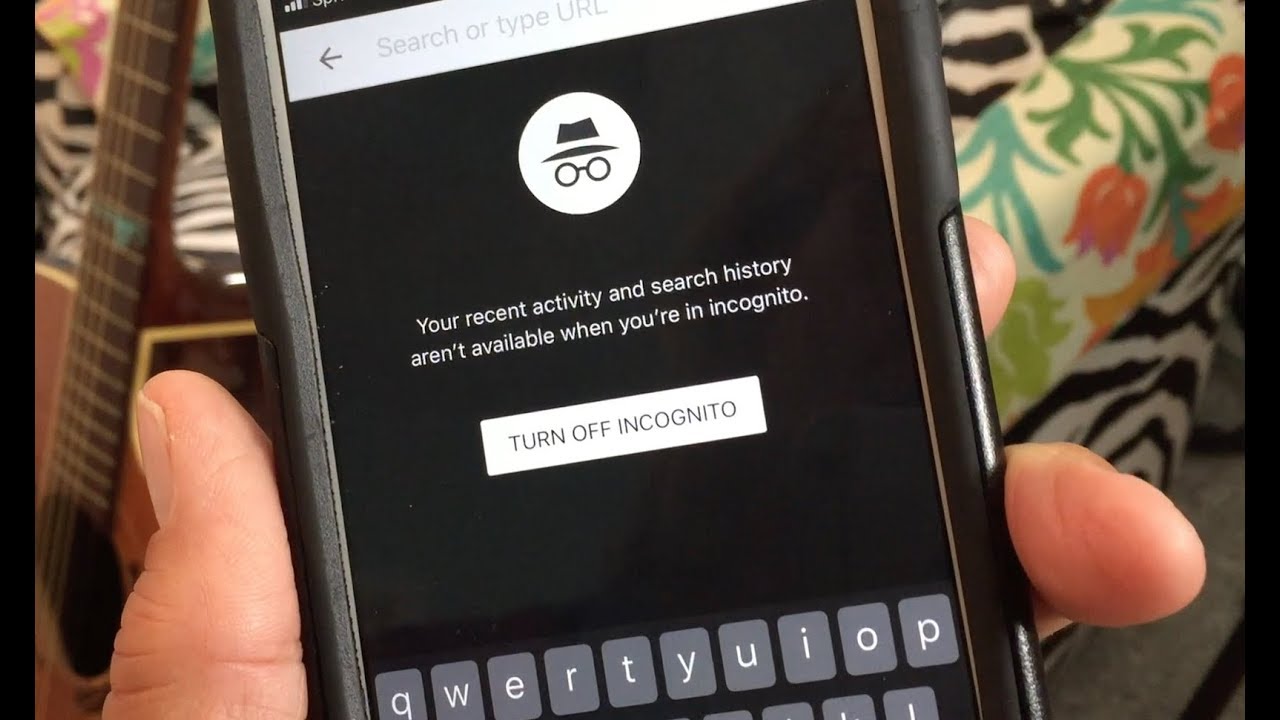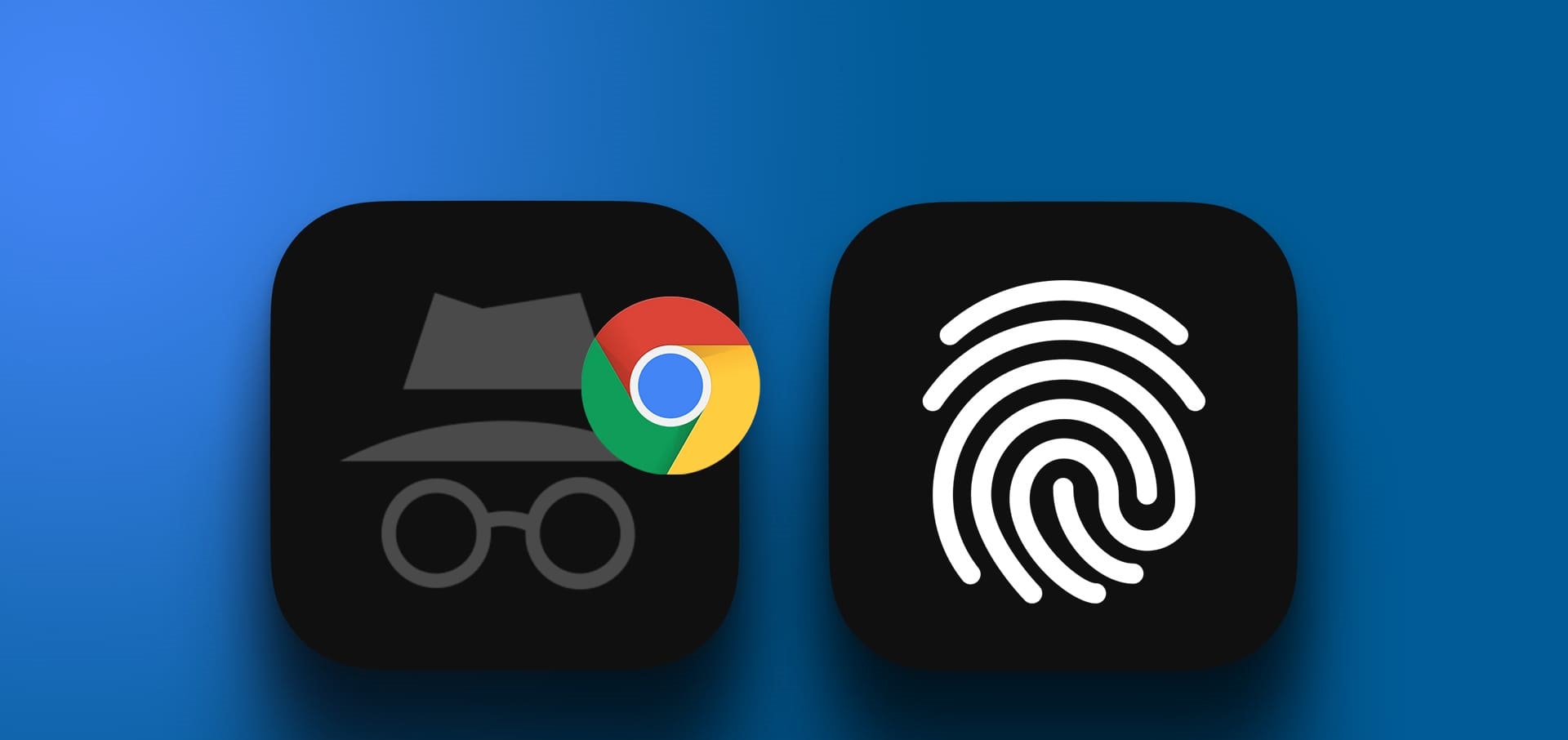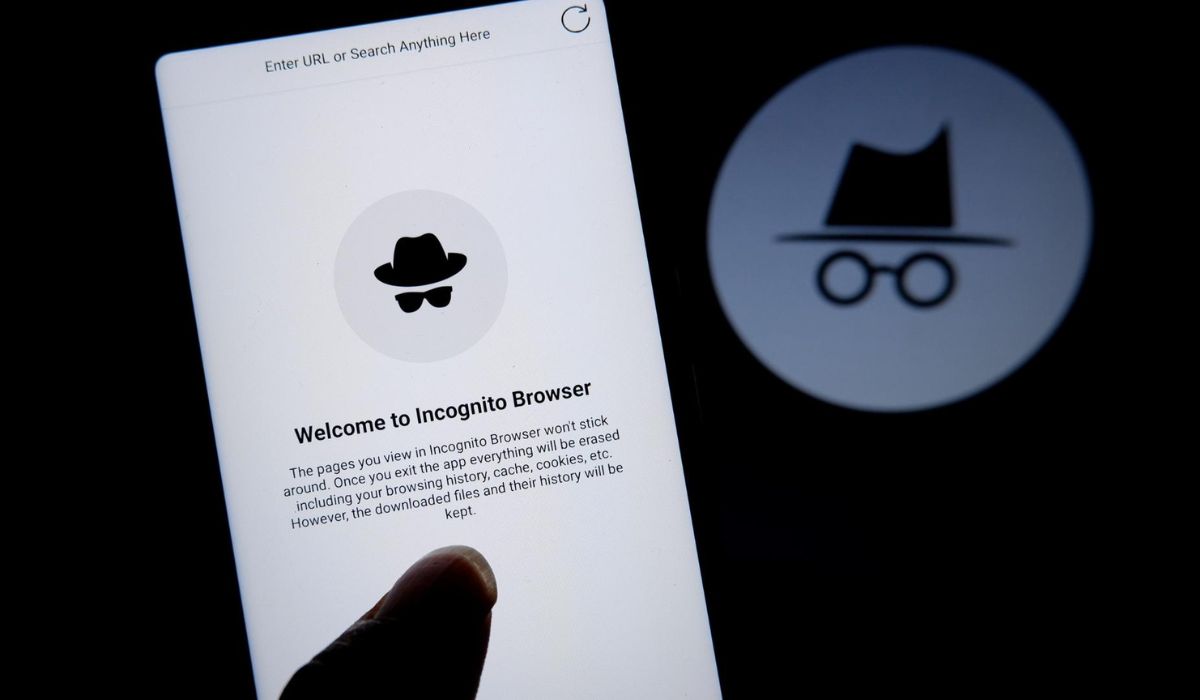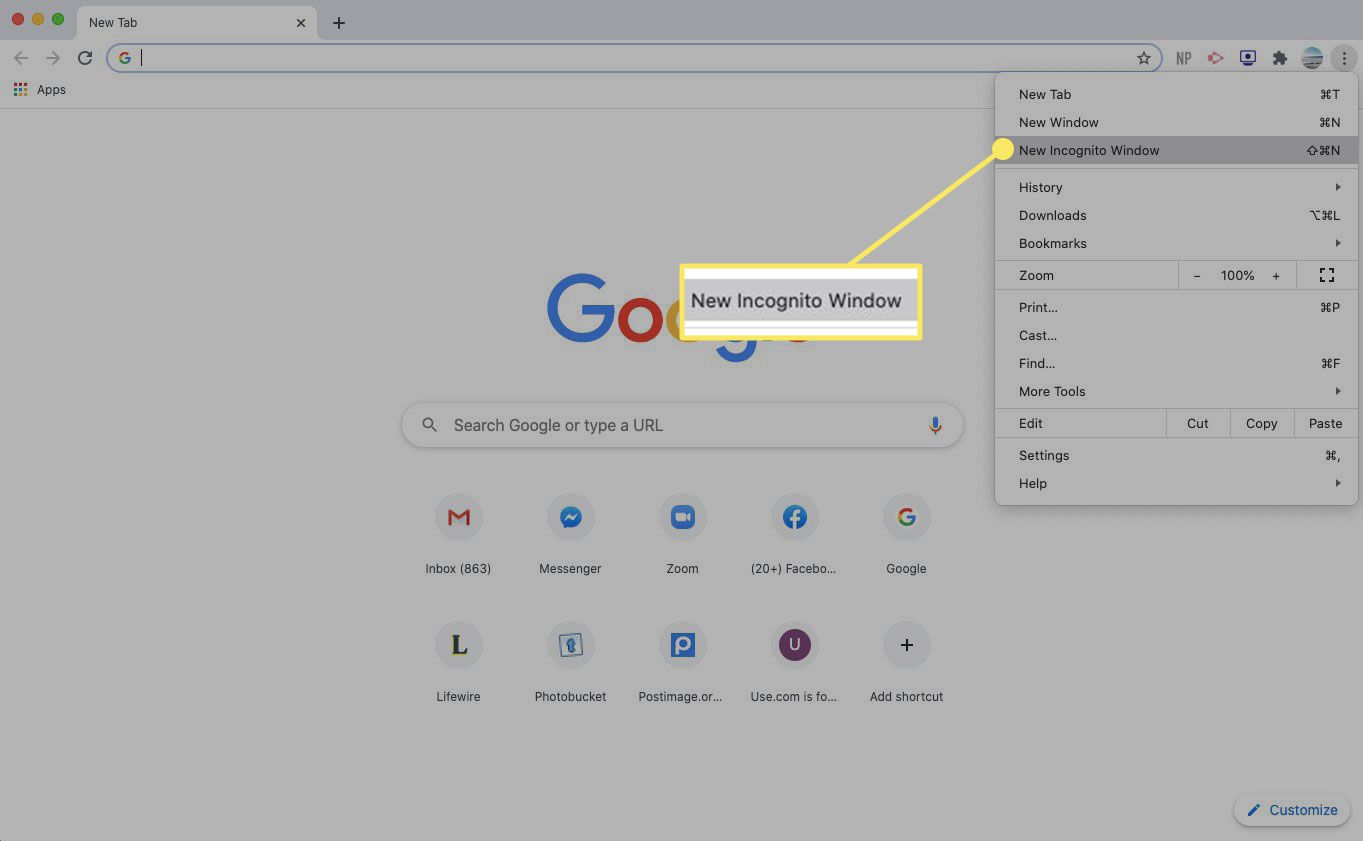Why Use Incognito Mode?
Incognito mode, also known as private browsing or stealth mode, is a feature available in most popular web browsers that allows users to browse the internet privately. When you activate incognito mode, your browsing history, cookies, and other tracking data are not saved. This means that once you close the incognito window, there is no trace of your browsing activity on your device.
There are several reasons why individuals choose to use incognito mode:
- Privacy: Incognito mode provides an added layer of privacy by preventing your browsing history from being stored. This can be particularly useful when using a shared device or accessing sensitive information, such as online banking or medical websites.
- Security: Incognito mode can help protect against certain types of online threats. By disabling cookies and extensions, it reduces the risk of being tracked by malicious websites or targeted advertisements. It also offers protection against keyloggers, which are often used to capture sensitive information like passwords.
- Testing and Development: Incognito mode is a valuable tool for web developers and testers. It allows them to view a website or web application as if they were visiting it for the first time, without any cached data or personalized settings affecting the results.
- Avoiding Autofill: When using regular browsing mode, web browsers often save information entered in forms, such as login credentials or shipping addresses. Incognito mode prevents this information from being stored, ensuring that sensitive data doesn’t accidentally get saved or compromised.
- Research and Surveys: Incognito mode can be useful for unbiased online research. It prevents search engines and websites from tailoring search results or suggestions based on your browsing history or personal preferences. This allows for a more neutral and objective exploration of information.
While incognito mode offers enhanced privacy and security, it’s important to remember that it does not make you completely anonymous online. Your internet service provider (ISP) and websites you visit can still track your activity. Moreover, any files you download or bookmarks you create will be saved on your device and can still be accessed by others.
Now that you understand the benefits of using incognito mode, let’s explore how to enable it in different web browsers.
How to Open Incognito Mode in Different Browsers
Opening incognito mode in different web browsers is a straightforward process. Here’s how you can do it:
1. Google Chrome
To open incognito mode in Google Chrome, follow these steps:
- Click on the three-dot menu icon in the top-right corner of the browser window.
- Select “New Incognito Window” from the drop-down menu.
- A new window will open with a dark theme, indicating that you are in incognito mode.
2. Mozilla Firefox
To open incognito mode in Mozilla Firefox, follow these steps:
- Click on the three-line menu icon in the top-right corner of the browser window.
- Select “New Private Window” from the drop-down menu.
- A new window will open with a purple mask icon in the top-right corner, indicating that you are in private browsing mode.
3. Safari
To open incognito mode in Safari, follow these steps:
- Click on “File” in the top menu bar.
- Select “New Private Window” from the drop-down menu.
- A new window will open with a dark theme and a message stating that you are in private browsing mode.
4. Microsoft Edge
To open incognito mode in Microsoft Edge, follow these steps:
- Click on the three-dot menu icon in the top-right corner of the browser window.
- Select “New InPrivate Window” from the drop-down menu.
- A new window will open with a blue “InPrivate” label in the top-left corner, indicating that you are in InPrivate mode.
5. Opera
To open incognito mode in Opera, follow these steps:
- Click on the Opera icon in the top-left corner of the browser window.
- Select “New Private Window” from the drop-down menu.
- A new window will open with a dark theme, indicating that you are in private browsing mode.
6. Mobile Devices
To open incognito mode on a mobile device, the process may vary slightly depending on the browser. Generally, you can open a new incognito tab or window by tapping on the menu icon (usually three dots or lines) and selecting the option for incognito or private browsing mode.
Now that you know how to open incognito mode in different browsers, you can start browsing the internet privately and securely.
How to Open Incognito Mode in Google Chrome
Google Chrome offers a convenient and user-friendly way to open incognito mode. Follow these steps to browse privately in Chrome:
- Open Google Chrome on your computer.
- Click on the three-dot menu icon in the top-right corner of the browser window. This will open a drop-down menu.
- Select “New Incognito Window” from the drop-down menu. You can also use the keyboard shortcut by pressing Ctrl + Shift + N (Windows/Linux) or Command + Shift + N (Mac).
- A new window will open with a dark theme. You will also see a message stating, “You’ve gone incognito.” This indicates that you are now in incognito mode.
- You can start browsing in incognito mode. Any websites you visit and files you download during this session will not be stored in your browsing history, and cookies will be deleted after you close the incognito window.
- By default, extensions are disabled in incognito mode for security and privacy reasons. However, you can choose to enable specific extensions for incognito mode by going to the Chrome menu, selecting “More tools,” and then “Extensions.” Locate the extension you want to enable and toggle the “Allow in incognito” option.
It’s worth noting that while browsing in incognito mode, your activity may still be visible to your internet service provider (ISP) and the websites you visit. Additionally, any bookmarks or files you download will remain on your computer after closing the incognito window. Incognito mode primarily focuses on preventing your browsing history and cookies from being stored locally.
Using incognito mode in Google Chrome can be especially useful when you want to protect your privacy on a shared or public computer, shop online without personalized recommendations, or access websites without being influenced by previous search history. Remember that incognito mode does not make you completely anonymous on the internet, so it’s important to use additional privacy measures if you require more comprehensive anonymity.
How to Open Incognito Mode in Mozilla Firefox
Mozilla Firefox provides a simple and straightforward method to open incognito mode for private browsing. Follow these steps to access incognito mode in Firefox:
- Open Mozilla Firefox on your computer.
- Click on the three-line menu icon in the top-right corner of the browser window. This will open a drop-down menu.
- Select “New Private Window” from the drop-down menu. You can also use the keyboard shortcut by pressing Ctrl + Shift + P (Windows/Linux) or Command + Shift + P (Mac).
- A new window will open with a purple mask icon in the top-right corner. This indicates that you are now in private browsing mode.
- You can now start browsing privately in Firefox. Any websites you visit and files you download during this session will not be logged in your browsing history, and cookies will be cleared after you close the private window.
- Similar to other browsers, Firefox disables extensions by default in private browsing mode. However, you can choose to enable specific extensions by clicking on the menu icon within the private window and selecting “Add-ons.” From there, you can manage the settings for each extension to allow them to run in private mode.
It’s important to note that while private browsing in Firefox, your activity may still be visible to your internet service provider (ISP) and the websites you visit. In addition, downloaded files or bookmarked pages will remain on your device after closing the private window. Private browsing primarily focuses on preventing your browsing history, form data, and cookies from being stored locally.
Using incognito mode in Mozilla Firefox is particularly useful when you want to maintain privacy on shared or public computers, conduct research without influencing search suggestions, or prevent websites from tracking your browsing habits. Bear in mind that private browsing does not provide complete anonymity, and for enhanced privacy, consider using additional measures like a virtual private network (VPN) or advanced privacy plugins.
How to Open Incognito Mode in Safari
If you’re a Safari user, accessing incognito mode for private browsing is a simple process. Follow these steps to open incognito mode in Safari:
- Open Safari on your computer.
- Click on “File” in the top menu bar. This will open a drop-down menu.
- Select “New Private Window” from the drop-down menu. Alternatively, you can use the keyboard shortcut by pressing Shift + Command + N.
- A new window with a dark theme will open, and you will see a message indicating that you are in private browsing mode.
- You can now browse privately in Safari. Any websites you visit and files you download during this session will not be saved in your browsing history, and cookies will be deleted after you close the private window.
- Safari, by default, disables certain features in private browsing mode, such as AutoFill and iCloud Tabs, to further protect your privacy. However, you can adjust the settings by going to Safari Preferences and selecting the “Privacy” tab.
While using private browsing in Safari, it’s important to remember that your activity may still be visible to your internet service provider (ISP) and the websites you visit. Additionally, any bookmarks or downloaded files will remain on your computer after closing the private window. Private browsing primarily focuses on preventing your browsing history and cookies from being stored locally.
Utilizing incognito mode in Safari is beneficial for situations where you want to maintain your privacy on shared or public computers, prevent websites from tracking your online activities, or access websites without being influenced by previous search history. Keep in mind that private browsing does not provide complete anonymity, so if you require additional privacy measures, consider using a virtual private network (VPN) or other privacy-enhancing tools.
How to Open Incognito Mode in Microsoft Edge
If you’re using Microsoft Edge as your web browser, you can easily open incognito mode for private browsing. Here’s how:
- Open Microsoft Edge on your computer.
- Click on the three-dot menu icon in the top-right corner of the browser window. This will open a menu.
- Select “New InPrivate Window” from the menu. You can also use the keyboard shortcut by pressing Ctrl + Shift + N (Windows/Linux) or Command + Shift + N (Mac).
- A new window will open with a blue “InPrivate” label in the top-left corner. This indicates that you are now in InPrivate mode, which is equivalent to incognito mode in other browsers.
- You can now browse privately in Microsoft Edge. Any websites you visit and files you download during this session will not be saved in your browsing history, and cookies will be deleted after you close the InPrivate window.
- By default, Microsoft Edge disables extensions in InPrivate mode, but you have the option to enable specific extensions. Click on the menu icon within the InPrivate window, go to “Extensions,” and manage the settings for each extension to allow them to run in InPrivate mode.
While using InPrivate mode in Microsoft Edge, it’s important to note that your activity may still be visible to your internet service provider (ISP) and the websites you visit. In addition, any downloaded files or bookmarked pages will remain on your device after closing the InPrivate window. InPrivate mode primarily focuses on preventing your browsing history and cookies from being stored locally.
Using incognito mode in Microsoft Edge can be useful when you want to maintain your privacy on shared or public computers, prevent websites from tracking your browsing habits, or access websites without being influenced by past search history. However, for enhanced privacy and anonymity, consider using additional measures like a virtual private network (VPN) or privacy-focused browser extensions.
How to Open Incognito Mode in Opera
If you are an Opera user, accessing incognito mode, also known as private browsing, is a straightforward process. Follow these steps to open incognito mode in Opera:
- Open Opera on your computer.
- Click on the Opera icon in the top-left corner of the browser window. This will open a drop-down menu.
- Select “New Private Window” from the drop-down menu. Alternatively, you can use the keyboard shortcut by pressing Ctrl + Shift + N (Windows/Linux) or Command + Shift + N (Mac).
- A new window will open with a dark theme, indicating that you are now in private browsing mode.
- You can now browse privately in Opera. Any websites you visit and files you download during this session will not be saved in your browsing history, and cookies will be cleared after you close the private window.
- By default, extensions are disabled in private browsing mode in Opera. However, you can choose to enable specific extensions for private browsing mode by clicking on the Opera icon, selecting “Extensions,” and toggling the “Allow in private mode” option for each desired extension.
While using private browsing mode in Opera, it’s important to note that your activity may still be visible to your internet service provider (ISP) and the websites you visit. Additionally, any bookmarks or downloaded files will remain on your computer after closing the private window. Private browsing primarily focuses on preventing your browsing history and cookies from being stored locally.
Using incognito mode in Opera can be beneficial when you want to maintain your privacy on shared or public computers, prevent websites from tracking your online activities, or access websites without being influenced by previous search history. However, it’s essential to keep in mind that private browsing does not provide complete anonymity. If enhanced privacy is necessary, consider using additional methods such as a virtual private network (VPN) or enhanced privacy browser extensions.
How to Open Incognito Mode on a Mobile Device
If you’re using a mobile device, such as a smartphone or tablet, you can also access incognito mode or private browsing to protect your privacy. Here’s how to open incognito mode on various mobile browsers:
Google Chrome
- Open the Google Chrome app on your mobile device.
- Tap on the three-dot menu icon in the top-right corner of the browser screen.
- Select “New Incognito Tab” from the menu. You can also use the shortcut by tapping on the number icon, located at the bottom of the screen, and selecting “New Incognito Tab.”
- A new tab will open, indicating that you are in incognito mode. You can now browse privately.
Mozilla Firefox
- Open the Mozilla Firefox app on your mobile device.
- Tap on the three-dot menu icon in the top-right corner of the browser screen.
- Select “New Private Tab” from the menu.
- A new tab will open with a purple mask icon in the top-right corner, indicating that you are browsing privately.
Safari
- Open the Safari app on your iPhone or iPad.
- Tap on the overlapping squares icon located at the bottom-right corner of the browser screen.
- Tap on “Private” in the bottom-left corner of the screen.
- A new tab will open with a dark theme, indicating that you are in private browsing mode.
Microsoft Edge
- Open the Microsoft Edge app on your mobile device.
- Tap on the three-dot menu icon in the bottom-right corner of the browser screen.
- Select “New InPrivate Tab” from the menu.
- A new tab will open with a blue “InPrivate” label in the top-left corner, indicating that you are browsing privately.
These instructions may vary slightly depending on the version and operating system of your mobile device. Private browsing on mobile browsers allows you to browse the internet without saving your search history, cookies, or other browsing data. However, it’s important to note that your internet service provider (ISP) and websites you visit can still see your online activity.
Now that you know how to open incognito mode on your mobile device, you can browse the web privately and protect your personal information.
How to Configure Incognito Mode Settings
While incognito mode offers a level of privacy and anonymity during browsing, you may want to configure certain settings to enhance your experience. Here are some settings you can customize in incognito mode:
1. Cookie Settings
You can adjust the cookie settings in your browser to determine how cookies are handled in incognito mode. You can choose to block all cookies, allow cookies for certain websites, or block third-party cookies. This allows you to have more control over the websites you visit and the information they can gather.
2. Tracking Protection
Some web browsers offer built-in tracking protection features that can enhance your privacy in incognito mode. These features can block certain types of tracking technologies, such as ad trackers or social media trackers, to prevent websites from collecting your data.
3. Plugin and Extension Settings
By default, many web browsers disable extensions in incognito mode for security and privacy purposes. However, you can choose to enable specific extensions for incognito mode based on your preferences. Consider enabling privacy-focused extensions that offer additional protection against tracking, ads, and other potential privacy risks.
4. Search Engine Preferences
You can modify your search engine preferences to ensure your searches remain private while in incognito mode. Choose a search engine that prioritizes privacy and does not log your search history or track your activity. This can further enhance your privacy and prevent search engine manipulation based on your browsing patterns.
5. Autofill and Form Data
Incognito mode usually disables autofill and form data by default, preventing your information from being automatically saved or filled in. However, you can adjust these settings in your browser if needed. Ensure that autofill is disabled to avoid inadvertently saving sensitive information while browsing privately.
Remember that even with these settings configured, incognito mode does not make you completely anonymous online. Your internet service provider (ISP) and the websites you visit can still track your activity. Additionally, if you download files or bookmark pages while in incognito mode, they will be saved on your device and can still be accessed by others.
Configuring these settings in incognito mode allows you to tailor your browsing experience to align with your privacy preferences. By taking control of your settings, you can enhance your online privacy and enjoy a more secure browsing experience.
How to Disable Incognito Mode in Different Browsers
While incognito mode can be a useful feature for private browsing, there may be instances where you want to disable it. Here’s how to disable incognito mode in different web browsers:
Google Chrome
- Open Google Chrome on your computer.
- Type “chrome://flags” in the address bar and press Enter.
- Scroll down and find the “Filesystem API in Incognito” option.
- Click on the dropdown menu next to the option and select “Disabled.”
- Restart Google Chrome for the changes to take effect.
Mozilla Firefox
- Open Mozilla Firefox on your computer.
- Type “about:config” in the address bar and press Enter.
- Click on “Accept the Risk and Continue” if prompted.
- In the search bar, type “privatebrowsing.autostart” and press Enter.
- Double-click on the preference to set it to “false.”
Safari
- Go to the Apple menu and select “System Preferences.”
- Click on “Screen Time.”
- Click on “Content & Privacy” in the sidebar.
- Click on “Apps” under the Privacy section.
- Scroll down and find “Web Browsers.”
- Click on “Web Browsers” and uncheck Safari.
Microsoft Edge
- Open Microsoft Edge on your computer.
- Type “regedit” in the Windows search bar and press Enter.
- Navigate to “HKEY_LOCAL_MACHINE\SOFTWARE\Policies\Microsoft\Edge.”
- Right-click on an empty space in the right pane and select “New” and then “DWORD (32-bit) Value.”
- Name the value “IncognitoModeAvailability.”
- Double-click on the value and set it to “0” to disable incognito mode.
Keep in mind that disabling incognito mode may require administrative access or modifying system settings. Additionally, the steps provided may vary depending on the browser version and operating system you are using. It’s always a good practice to double-check the browser’s official documentation or seek technical assistance if needed.
Disabling incognito mode can be useful in certain situations, such as managing parental controls or enforcing browsing restrictions on shared devices. However, remember that incognito mode is designed to enhance privacy, and disabling it should only be done with proper consideration and justification.
Frequently Asked Questions about Incognito Mode
Here are some common questions and answers about incognito mode:
1. Does incognito mode hide your IP address?
No, incognito mode does not hide your IP address. Your IP address is still visible to websites you visit and your internet service provider (ISP). Incognito mode primarily focuses on preventing your browsing history and cookies from being stored locally on your device.
2. Can websites still track me in incognito mode?
Websites can still track your activity to some extent, even in incognito mode. Although your browsing history and cookies are not stored on your device, websites can still track your IP address, monitor your network activity, and use other tracking techniques. To enhance your privacy, use additional measures like browser extensions or virtual private network (VPN) services.
3. Does incognito mode protect my data from being seen by others on the same network?
No, incognito mode does not provide protection against others on the same network, such as public Wi-Fi hotspots. While incognito mode can prevent your browsing history from being stored locally, it does not encrypt your internet traffic or protect your data from being intercepted by other devices on the same network. To secure your data, consider using a VPN or HTTPS connections.
4. Can I use incognito mode to bypass paywalls or access restricted content?
While incognito mode can sometimes help bypass certain paywalls or access limited content, it is not a foolproof method. Some websites may still require you to sign in or subscribe, regardless of whether you are in incognito mode. Additionally, using incognito mode to intentionally bypass paywalls or access restricted content may violate the terms of service or copyright laws.
5. Does incognito mode make me completely anonymous online?
No, incognito mode does not make you completely anonymous on the internet. It provides some level of privacy by preventing your browsing history and cookies from being stored on your device. However, your IP address, internet traffic, and other identifying information can still be tracked by your ISP and the websites you visit. For enhanced anonymity, consider using a combination of incognito mode, VPNs, and additional privacy tools.
6. Can I bookmark pages or download files in incognito mode?
Yes, you can bookmark pages or download files while in incognito mode. However, any bookmarks or downloaded files will remain on your device after you close the incognito window and may be visible to others. Incognito mode primarily focuses on preventing the browsing history and cookies from being stored locally, but it does not restrict your ability to save or download files.
If you have further questions about incognito mode or private browsing, consult your browser’s official documentation or reach out to their support for more information.
Conclusion
Incognito mode or private browsing is a valuable feature available in most popular web browsers. It allows users to browse the internet privately, protecting their browsing history and preventing cookies from being stored. Through this mode, users can enjoy a level of privacy, security, and control over their online activities.
Whether you are concerned about privacy, security, or simply want to explore the web without leaving a trace, incognito mode can be a useful tool. It provides an added layer of protection, especially when using shared or public devices, accessing sensitive information, or conducting unbiased research.
Throughout this article, we have discussed why you might want to use incognito mode, how to open it in various browsers, and additional settings and configurations you can adjust. We have also addressed frequently asked questions to provide a comprehensive understanding of incognito mode.
However, it’s important to note that while incognito mode offers advantages in terms of privacy, it does not guarantee complete anonymity. Your internet service provider (ISP) and the websites you visit can still track your activities. For enhanced privacy, consider using additional measures like virtual private networks (VPNs) or privacy-focused browser extensions.
Ultimately, the decision to use incognito mode depends on your specific needs and preferences. Whether you want to protect your personal data, prevent personalized advertisements, or simply maintain a level of privacy while browsing, incognito mode can be a valuable tool in your online toolkit.
Stay informed, stay secure, and enjoy a more private browsing experience with incognito mode.







